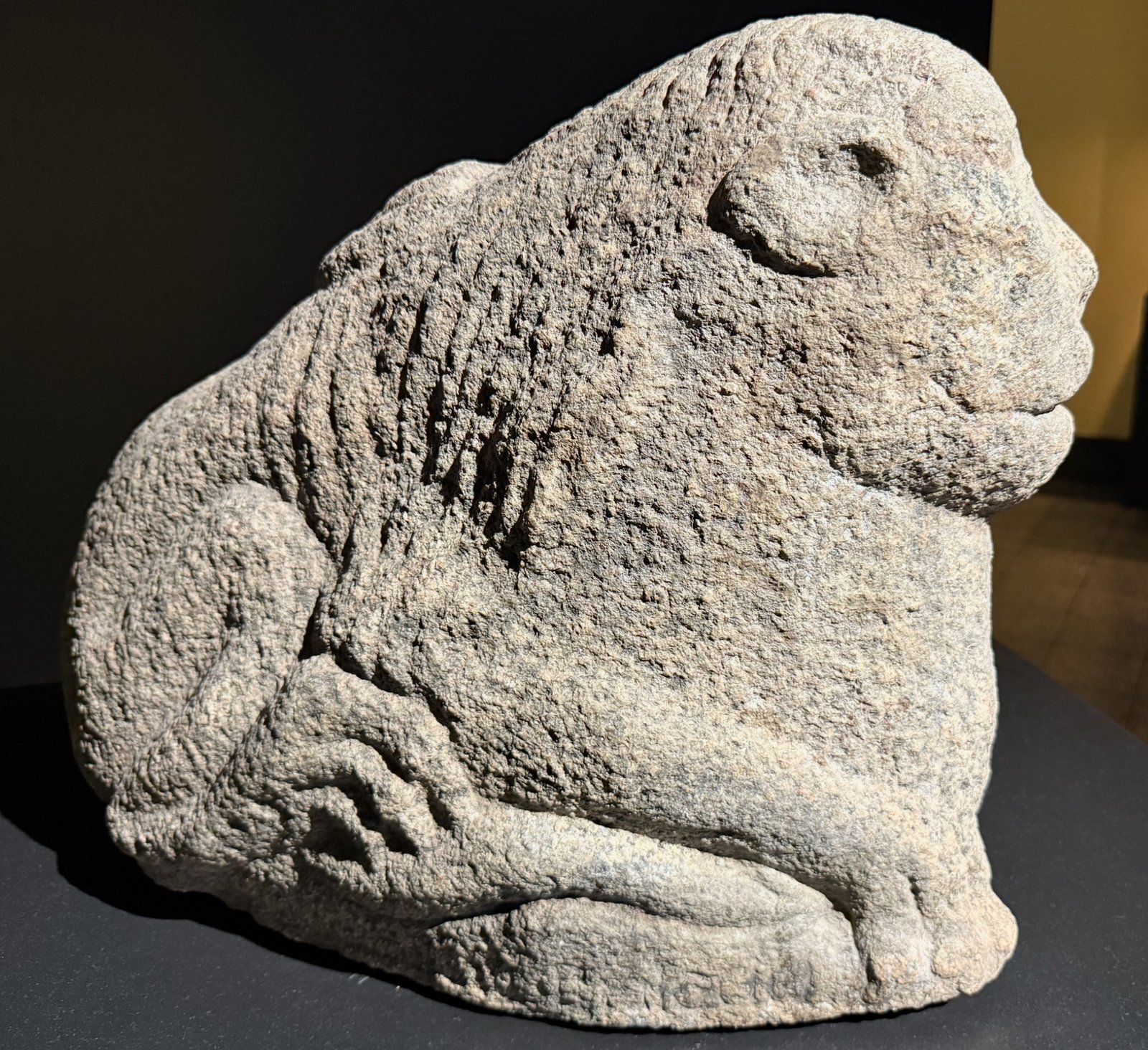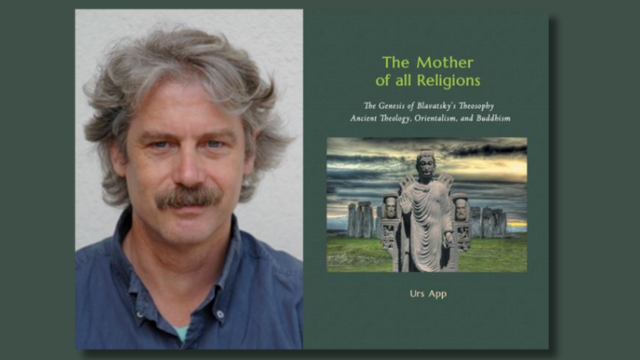The Žygaičiai Lion is the enigmatic centerpiece of the Lithuanian art exhibition at Kaunas’ Čiurlionis Museum
by Massimo Introvigne

In the hushed, vaulted halls of the M. K. Čiurlionis National Museum of Art in Kaunas, where amber glows and medieval saints gaze from gilded panels, one sculpture steals the spotlight—and the imagination. Meet the Žygaičiai Lion, a weathered, enigmatic beast crouched in stone, its stylized mane and solemn gaze whispering tales from the 14th century. This isn’t just a museum piece—it’s a time traveler.
In a country where Pagan gods once ruled the forests and rivers, the stone lion—silent, solemn, and scarred by time—now commands attention. It may well be the oldest Christian sculpture ever found in Lithuania.
The lion’s journey to the museum is as dramatic as its expression. It was discovered accidentally in 1931 by a shepherd called Juozas Martusevičius in the village of Žygaičiai, in the Tauragė District, buried on the bank of the Ežeruona stream flowing out of Lake Draudeniai like a forgotten sentinel. But it wasn’t until recent efforts that the lion was thoroughly studied and restored. Now, it stands in Kaunas—its paws firm, its gaze eternal.
The sculpture is carved from fieldstone, its surface rough and pitted by centuries of exposure. Yet its form is unmistakable: a stylized lion with a broad, flattened face, deep-set eyes, and a mane rendered in rhythmic, almost geometric curls. Its mouth is slightly open, as if caught mid-roar—or mid-prayer. The paws are oversized, almost cartoonish, but they grip the earth with purpose. With its left foreleg, the lion holds a king who is holding a cross to its chest, while its left hind paw steps on a grass snake (or dragon). At the bottom of both sides are worn, illegible engraved inscriptions, except for the word LEO, which can be seen on the left side.
What makes the Žygaičiai Lion so compelling is its ambiguity. Its presence in Žygaičiai raises tantalizing questions. Was it brought by crusaders attempting to Christianize the region through conquest? Or was it carved locally, inspired by imported styles but rooted in Lithuanian soil? Some scholars argue that its primitive execution suggests a local artisan, perhaps working under foreign influence. Others point to its stylistic parallels with Romanesque lions in Poland and Germany. Some historians speculate it was brought by the Teutonic Knights or other crusading orders who invaded Lithuania from the 13th to the 15th centuries. Lithuania was the last Pagan nation in Europe, and the lion may have been part of a funerary monument or church portal erected by the crusaders. If so, it represents not just faith—but force.

But the lion’s survival is a miracle in itself. Lithuania resisted Christianization longer than any other European nation, and the crusaders’ campaigns were met with fierce resistance. That this sculpture endured—through wars, Pagan revivals, Soviet atheism, and rural obscurity—is a testament to its quiet resilience.
Either way, the sculpture marks a collision point—between Pagan resistance and Christian imposition, between local tradition and foreign ideology. And unlike the grand cathedrals or gilded altarpieces that followed, the lion is raw, unpolished, and deeply human.
At the Čiurlionis Museum, the lion anchors an exhibition that spans five centuries of Lithuanian sacred art. Icons, altarpieces, and devotional paintings surround it, each telling a story of faith, adaptation, and survival. But the lion is different. It doesn’t depict a saint or a biblical scene. It is the scene—a relic of a time when belief was contested, and art was a weapon.

Visitors linger before it, drawn by its mystery. Children trace its mane with their eyes. Scholars debate its origins. And artists sketch its silhouette, hoping to capture its quiet power.
In an age of digital ephemera and curated perfection, the Žygaičiai Lion reminds us of something older, rougher, and more enduring. It symbolizes Lithuania’s complex spiritual history—of resistance and resilience, imposed faith and reclaimed identity.
So if you find yourself in Kaunas this autumn, step into the Čiurlionis Museum. Stand before the lion. And listen. It doesn’t roar. It remembers.

Massimo Introvigne (born June 14, 1955 in Rome) is an Italian sociologist of religions. He is the founder and managing director of the Center for Studies on New Religions (CESNUR), an international network of scholars who study new religious movements. Introvigne is the author of some 70 books and more than 100 articles in the field of sociology of religion. He was the main author of the Enciclopedia delle religioni in Italia (Encyclopedia of Religions in Italy). He is a member of the editorial board for the Interdisciplinary Journal of Research on Religion and of the executive board of University of California Press’ Nova Religio. From January 5 to December 31, 2011, he has served as the “Representative on combating racism, xenophobia and discrimination, with a special focus on discrimination against Christians and members of other religions” of the Organization for Security and Co-operation in Europe (OSCE). From 2012 to 2015 he served as chairperson of the Observatory of Religious Liberty, instituted by the Italian Ministry of Foreign Affairs in order to monitor problems of religious liberty on a worldwide scale.



